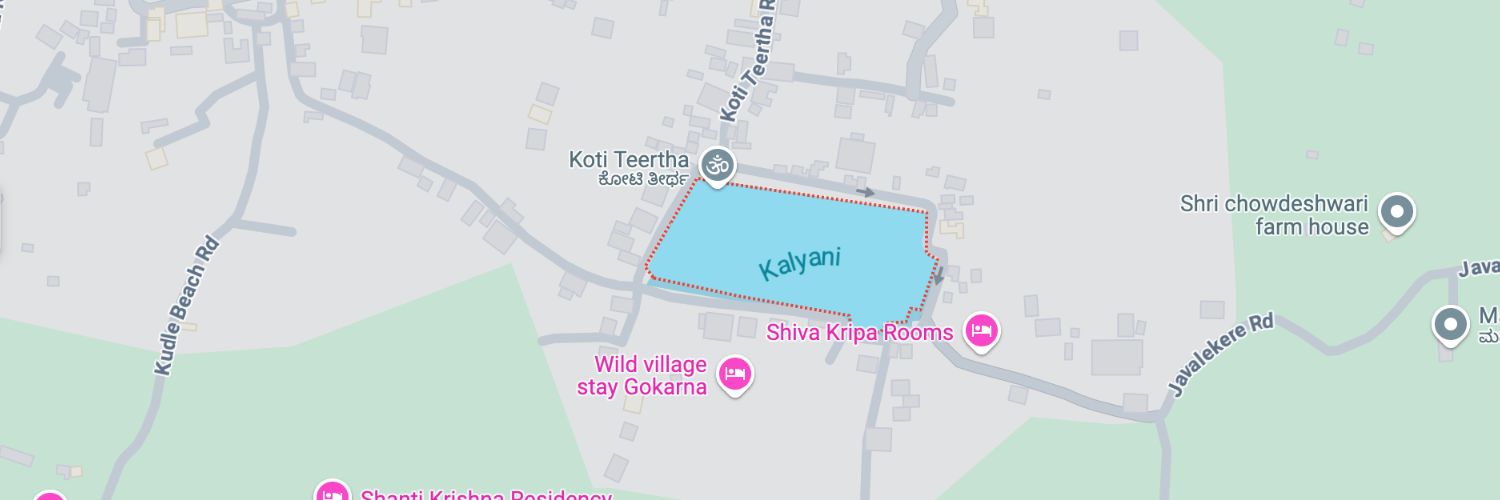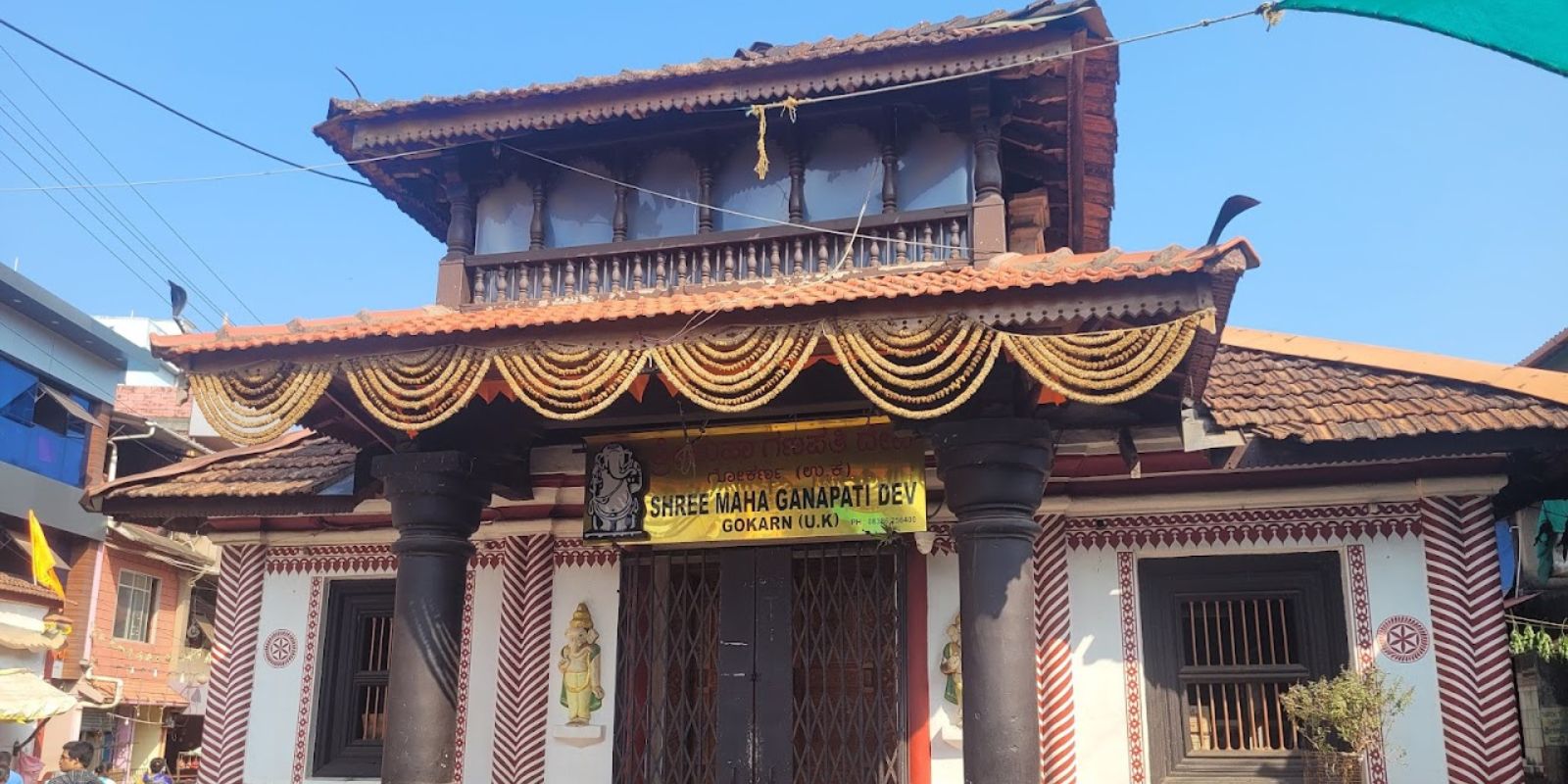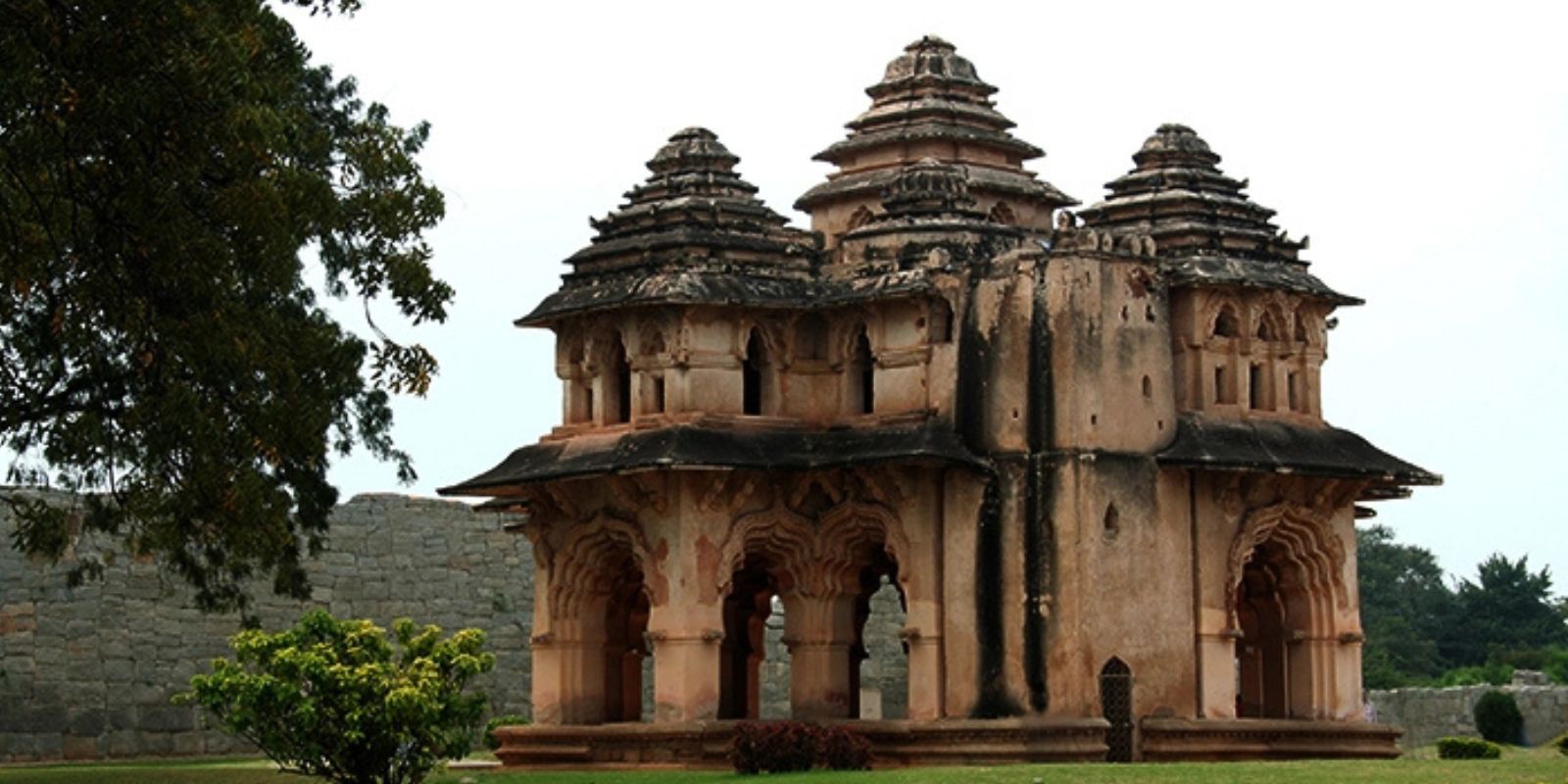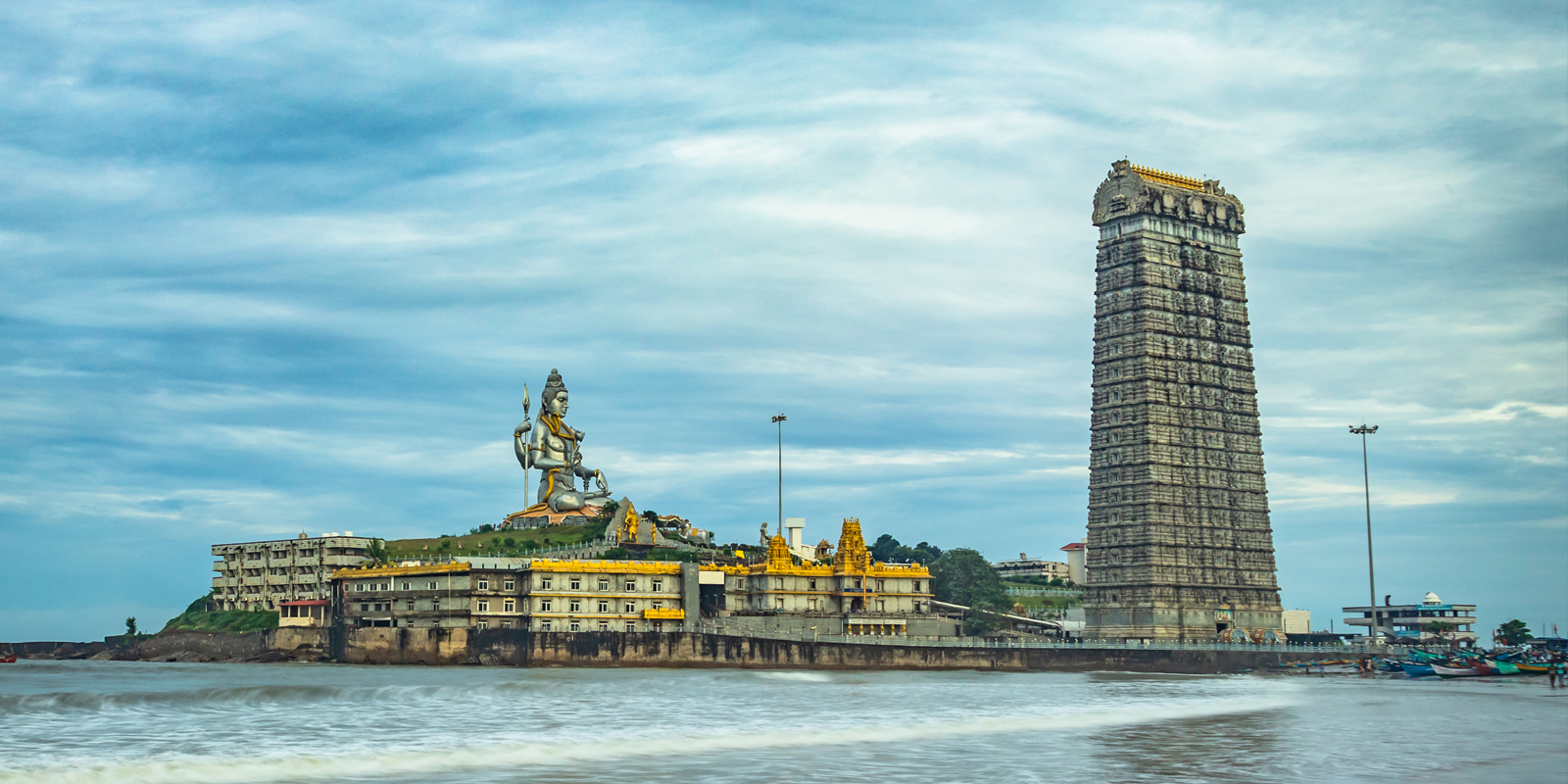Located just a few steps from Mahabaleshwar Temple, Koti Teertha (meaning “a thousand springs”) is a revered sacred tank at the heart of Gokarna’s spiritual life. Surrounded by colorful temples and stone steps, this rectangular freshwater pond is used by pilgrims to cleanse themselves before visiting Lord Shiva’s shrine. It is believed that bathing here washes away karma and offers blessings for both the living and the departed. The peaceful ripples of Koti Teertha reflect not just water—but a tradition of timeless faith.
Noteworthy Attractions
Shraddha
Koti Teertha is a favored site for pitr̥ tarpaṇa rituals, performed for the peace of departed souls.
Turtle Symbolism
The sacred turtles seen in the water are considered divine messengers and symbols of spiritual steadiness.
Ritual Dip
Devotees purify themselves at this sacred tank, Koti Teertha, believed to wash away sins before darshan at the main temple.
History & Culture
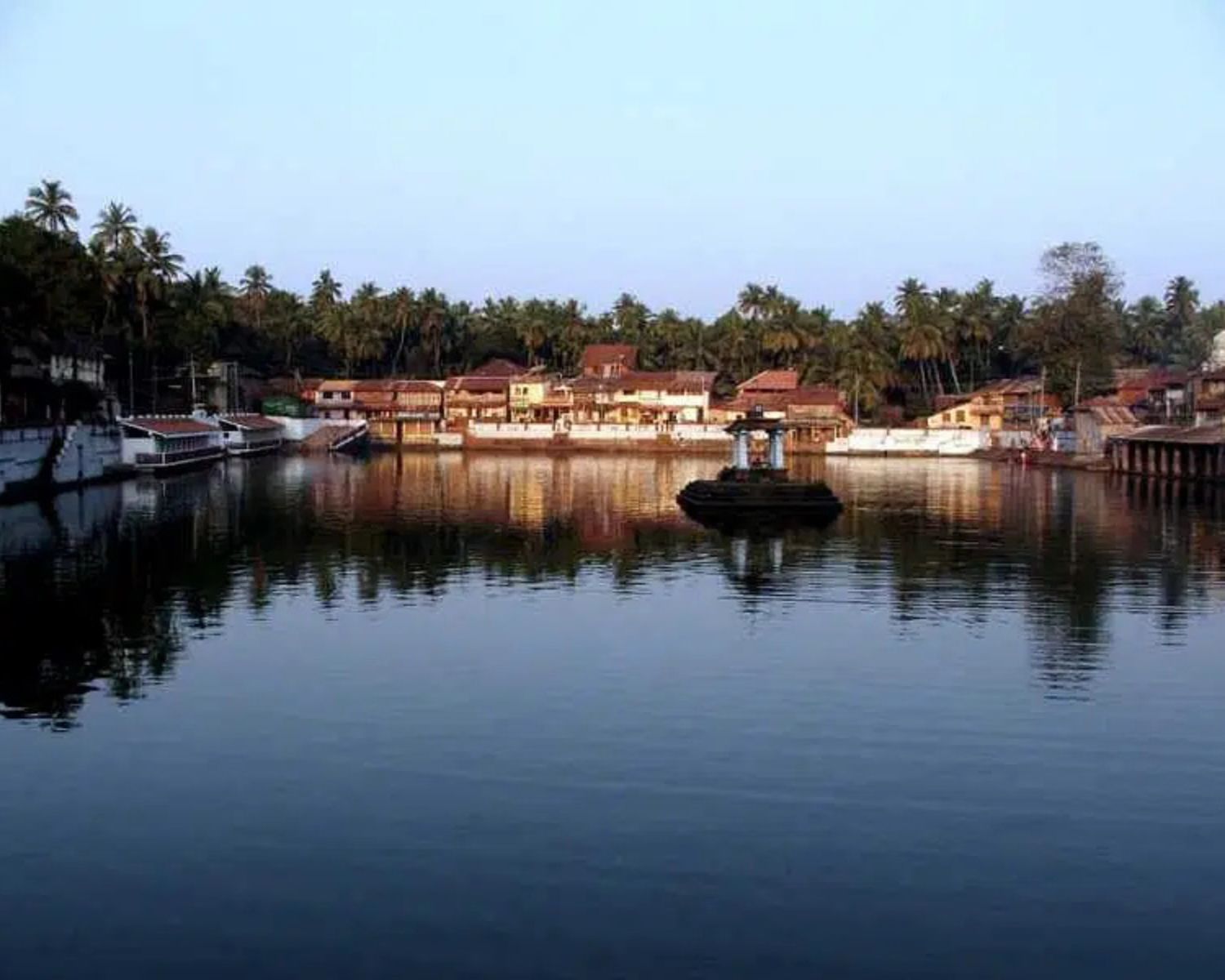
Origins & Legacy
According to legend, Koti Teertha was created by Lord Shiva himself, who struck the ground to form a tank fed by a thousand underground springs. The name literally translates to “thousand sacred waters.” Historically, it has served as the starting point for pilgrims undertaking the Gokarna temple circuit, and is mentioned in regional texts as a purifier of sins and a site where spiritual evolution begins.
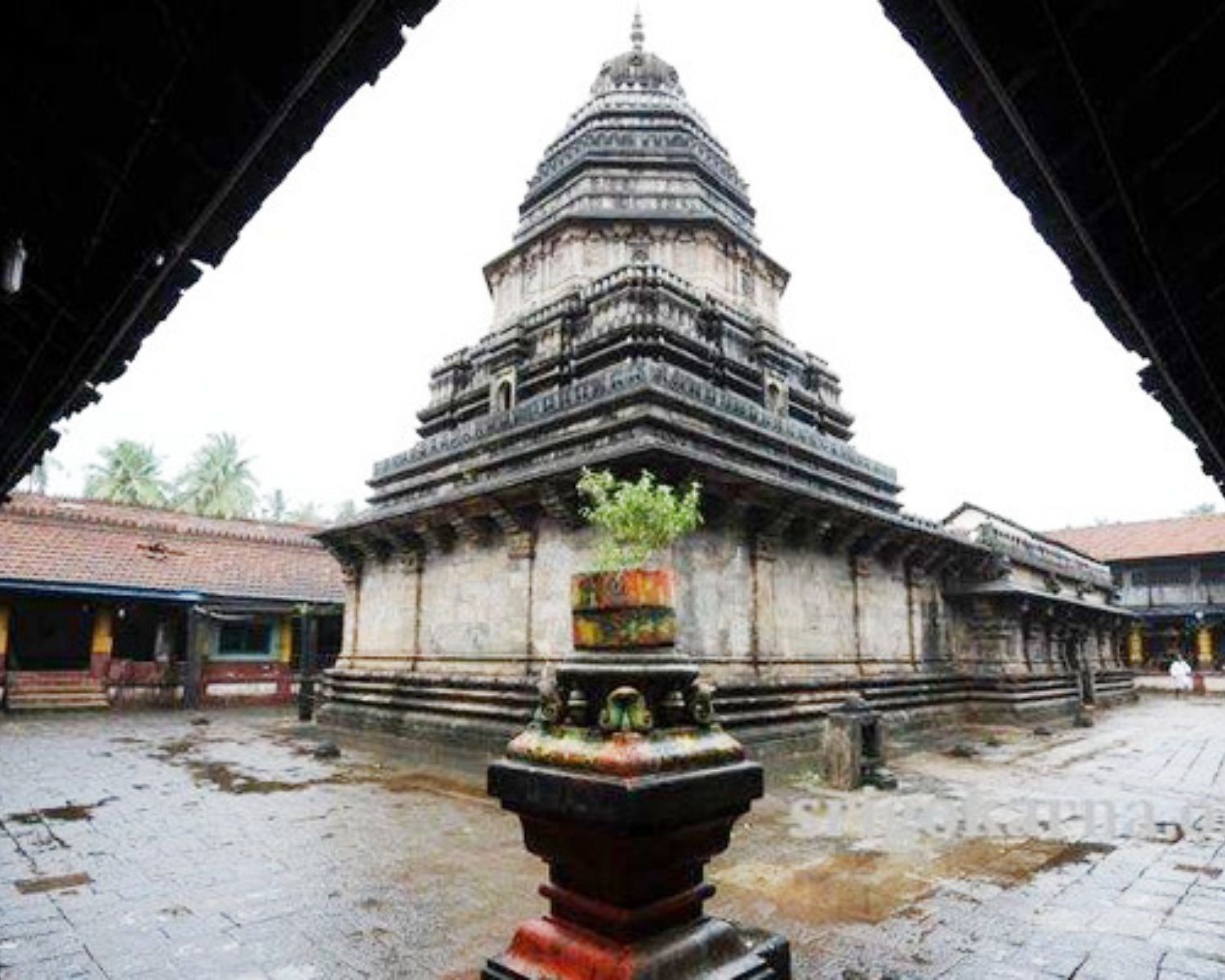
Sacred Importance
Koti Teertha plays a crucial role in the rituals associated with Gokarna’s temples. Pilgrims take a holy dip here before visiting the Mahabaleshwar Temple. It is also one of the most auspicious places in Karnataka to perform śrāddha and tarpaṇa—ancestral rites believed to aid the soul’s journey. During Maha Shivaratri, the tank becomes the center of devotion, with lamps floating on water and collective prayers echoing in the twilight.
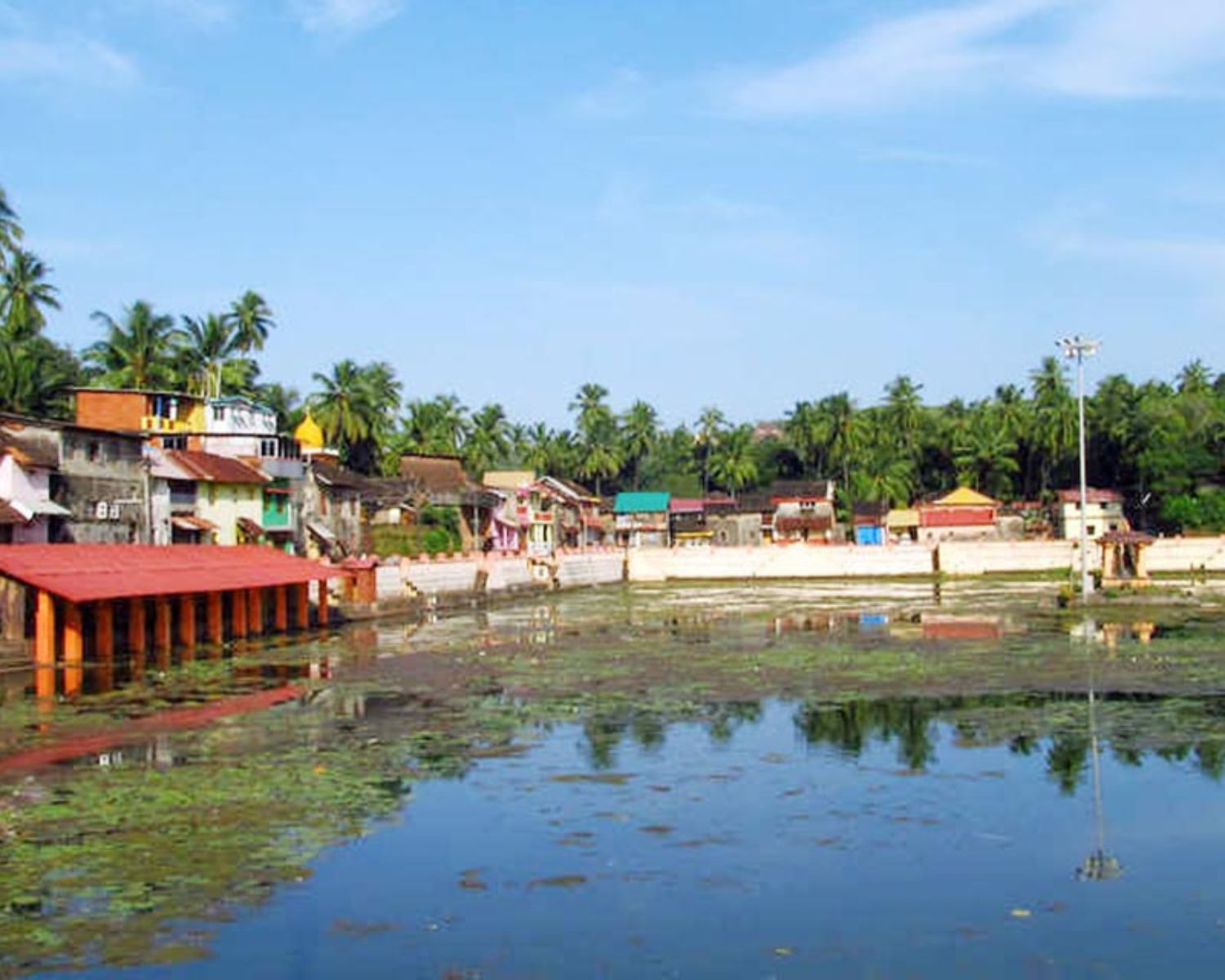
Rituals & Traditions
- Pre-darshan holy dip for cleansing and sanctity.
- Pitr̥ tarpaṇa: water offerings for ancestors.
- Lighting oil lamps and setting them afloat at dusk.
- Feeding the sacred turtles as an act of merit (puṇya).
Practical Guidance
When to Go
The best time to visit is October to March, with pleasant coastal weather and major festivals like Maha Shivaratri in February. Monsoons (June–September) are lush but may limit beach access.
Respect & Reverence
Guidelines
-
Wear modest clothing—no shorts or sleeveless tops.
-
Silence is appreciated during rituals. Footwear must be left outside temple zones.
Restrictions
-
Photography is strictly prohibited inside the sanctum.
-
Avoid littering or bringing non-vegetarian food or plastic inside the temple complex.
Arriving Here
By Air
Dabolim Airport (Goa) is the nearest, approx. 140 km away. Taxis and buses connect to Gokarna in 3–4 hours.
By Rail
Gokarna Road Station (10 km from town) connects via Konkan Railway. Autos and taxis are available outside.
By Road
Gokarna lies 485 km from Bengaluru and 235 km from Mangalore. Regular buses and private cabs offer scenic coastal drives.temple.
Immersive Experiences
Spiritual Practices
Meditate at sunrise near the eastern edge, where early light reflects off temple spires and the chants begin.
Local Rituals
Light ghee lamps at sunset near Kotiteertha, mirroring age-old traditions of invoking divine light into one’s life.
Workshops & Courses
Join locals in lighting deepams (oil lamps) and placing them on lotus leaves to float across the tank as offerings.
Closing Reflection
Koti Teertha is more than a water tank—it is Gokarna’s spiritual mirror. A place to release, reflect, and renew.

